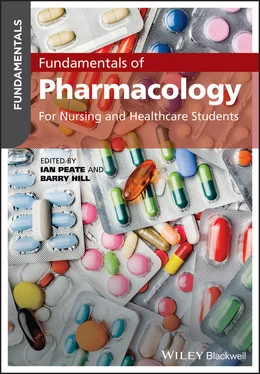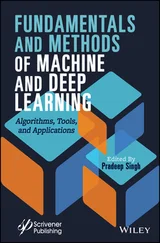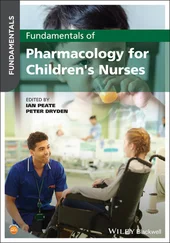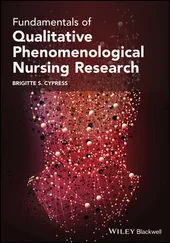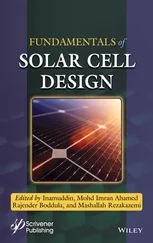1 Cover
2 Title Page Fundamentals of Pharmacology For Nursing and Healthcare Students Edited by IAN PEATE, EN(G), RGN, DipN (Lond) RNT, BEd (Hons), MA (Lond) LLM, OBE, FRCN, JP Principal School of Health Studies Gibraltar Health Authority St Bernard’s Hospital Gibraltar, UK BARRY HILL, MSc ANP, PGCAP, PGCE, BSc (Hons), DipHE, O.A. Dip, Fellow (FHEA) Senior Lecturer and Director of Education (Employability) Faculty of Health and Life Sciences Department of Nursing, Midwifery and Health Northumbria University Newcastle upon Tyne, UK
3 Copyright Page
4 Contributor
5 Preface References
6 Acknowledgements
7 Prefixes and suffixes
8 Abbreviations
9 Chapter 1: Introduction to pharmacology Aim Introduction Patient assessment The Code of Conduct The Nursing and Midwifery Council's Standards of Proficiency Medicine management and standards Medicines optimisation Patient beliefs and medicines Conclusion Glossary References Further reading Multiple choice questions
10 Chapter 2: How to use pharmaceutical and prescribing reference guides Aim Introduction The British National Formulary Online and mobile application BNF MIMS (Monthly Index of Medical Specialities) Electronic Medicines Compendium What can be prescribed on an NHS prescription? The Drug Tariff Other guides to prescribing The evidence base to prescribing: prescribing guidelines NICE prescribing guidance Scottish Intercollegiate Guidelines Network (SIGN) Conclusion References Further reading Multiple choice questions
11 Chapter 3: Legal and ethical issues Aim Introduction The law Ethical principles and theories Regulatory bodies Research Conclusion References Further reading Multiple choice questions Find out more
12 Chapter 4: Medicines management and the role of the healthcare provider Introduction Medicines management Manufacturing, marketing, and procurement and sale Selection Supply Prescribing Handling and administration Special consideration: Controlled drugs and critical medications Groups requiring special considerations Monitoring for side effects Medicine optimisation Safety in medicines management Storage and disposal Conclusions References Further reading Multiple choice questions
13 Chapter 5: Pharmacodynamics and pharmacokinetics Aim Introduction Royal Pharmaceutical Society The Nursing and Midwifery Council Pharmacokinetics Pharmacokinetic principles (the ADME process) Phase 1: Absorption Phase 2: Distribution Phase 3: Metabolism (Biotransformation) Phase 4: Elimination An example of the pharmacokinetics of aspirin Routes of drug administration Pharmacodynamics Agonists and antagonists Drug potency and efficacy Therapeutic index Adverse effects Conclusion References Multiple choice questions
14 Chapter 6: Drug formulations Aim Introduction Tablets Buccal/sublingual Oral Topical Rectal Vaginal Inhalation Injection routes Conclusion References Further reading Multiple choice questions
15 Chapter 7: Adverse drug reaction Definition – what is an adverse drug reaction The prevalence of adverse reactions The ABCDE classification of adverse reactions The signs and symptoms of adverse effects Physical signs of an adverse drug reaction may include the following Adverse reaction diagnosis and management Reporting incidents of adverse drug reactions Conclusion References Further reading Multiple choice questions
16 Chapter 8: Analgesics Aim Introduction Pain pathways Definitions and categories of pain Importance of individualised pain assessments Assessment tools Multimodal management strategies Pharmacological management Non‐opioids Non‐steroidal anti‐inflammatories (NSAIDs) Opioid agonists Codeine phosphate Dihydrocodeine Tramadol Morphine Fentanyl Adjuvants and co‐analgesics – gabapentinoids Inhalation analgesics Local and regional anaesthesia Conclusion References Multiple choice questions Find out more
17 Chapter 9: Antibacterials Introduction Language and terminology Antibacterial mechanisms of action Choosing the right treatment Antimicrobial resistance Antibacterials by action Beta‐lactams Protein synthesis interference Tetracyclines Chloramphenicol Aminoglycosides Macrolides Lincosamides Conclusion References Further reading Multiple choice questions Find out more
18 Chapter 10: Medications used in the cardiovascular system Aim Introduction Medications used in the management of cardiovascular diseases Atheroma and the hyperlipidaemias Medications used to regulate lipids: Antihyperlipidaemic medications Statins: HMG‐CoA reductase inhibitors Inhibitors of cholesterol absorption Fibrates Bile‐acid‐binding resins: Cholesterol absorption inhibitors PCSK9 inhibitors Alternatives to statins Medications used in management of hypertension Medications used to manage hypertension Angiotensin‐converting enzyme inhibitors (ACEi) Calcium channel blockers (CCBs) Diuretics Loop diuretics Thiazide diuretics Potassium‐sparing diuretics Angiotensin receptor blockers (ARBs) Beta‐adrenoceptor antagonists (beta‐blockers) Alpha‐adrenergic blockers: Alpha blockers Vasodilators Central acting agents Direct renin inhibitors (DRIs) Medications used in managing ischaemic heart disease Isosorbide dinitrate and isosorbide mononitrate Potassium channel activators Medications used for cardiac arrhythmias Disorders of heart rhythm and rate Amiodarone Digoxin Magnesium sulphate Arrhythmias due to conduction defects Atropine sulphate Medications used in the management of heart failure Medications used in heart failure Mineralocorticoid receptors antagonist (MRAs) Reducing the workload of the heart Hyperpolarisation‐activated cyclic nucleotide‐gated (HCN) channel blockers Angiotensin receptor neprilysin inhibitors Optimising contractility of the heart Medications that affect haemostasis Antiplatelet medications Clopidogrel, Prasugrel and Ticagrelor Dipyridamole Glycoprotein 11b/111a inhibitors Anticoagulants Heparin Low molecular weight fragments of heparin (LMWH) Vitamin K inhibitors Direct‐acting oral anticoagulants (DOACs) The thrombolytics Medications used in peripheral vascular disease Pharmacological interventions: The future Conclusion References Further reading Multiple choice questions
19 Chapter 11: Medications and the renal system Aim Introduction Anatomy and physiology of the renal tract Common renal conditions Drug‐induced renal damage Drug classes that act upon the renal system Drugs used to treat fluid retention Drugs used to treat electrolyte disorders Drugs used to treat urinary retention and urinary incontinence Drugs and dialysis Conclusion References Further reading Multiple choice questions Find out more
20 Chapter 12: Medications and diabetes mellitus Aim Introduction HbA1c Blood glucose measurements Diagnosis and signs and symptoms Individual assessment Oral medications Insulin Conclusion References Further reading Multiple choice questions
21 Chapter 13: Medications and the respiratory system Aim Introduction Anatomy and physiology of the respiratory tract Common respiratory conditions Classes of respiratory drugs Oxygen therapy Bronchodilators β 2adrenoceptor agonists Muscarinic receptor antagonists Xanthines Corticosteroids Immune modulators Mast cell stabilisers Leukotriene receptor antagonists Mucolytics Conclusion References Further reading Multiple choice questions Find out more
22 Chapter 14: Medications and the gastrointestinal system Aim Introduction Gastroesophageal reflux disease Peptic ulcer disease Nausea and vomiting Gut motility and defaecation Constipation Diarrhoea Inflammatory bowel disease Ulcerative colitis Crohn's disease Conclusion References Further reading Multiple choice questions
23 Chapter 15: Medications used in cancer Aims Introduction Cancer Chemotherapies Side effects of chemotherapy Prescription and administration of chemotherapy Immunotherapies in treating cancer The use of immunotherapy Side effects of immunotherapy Corticosteroid use in cancer Side effects of Corticosteroids Conclusion Glossary References Further reading
Читать дальше
